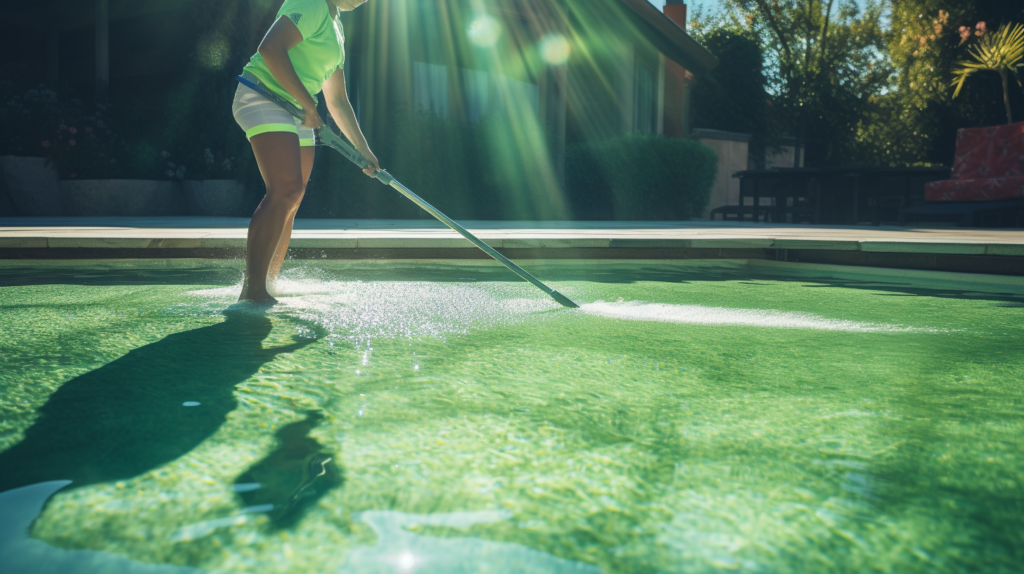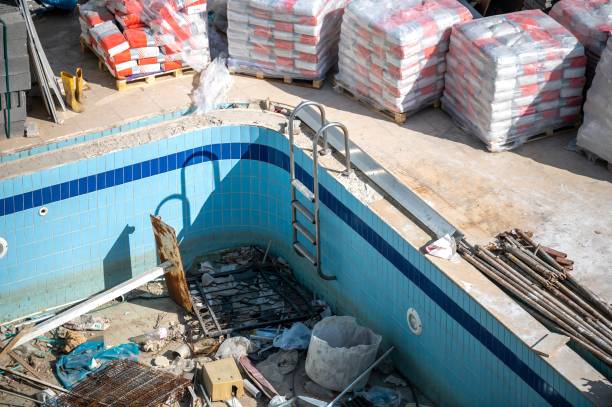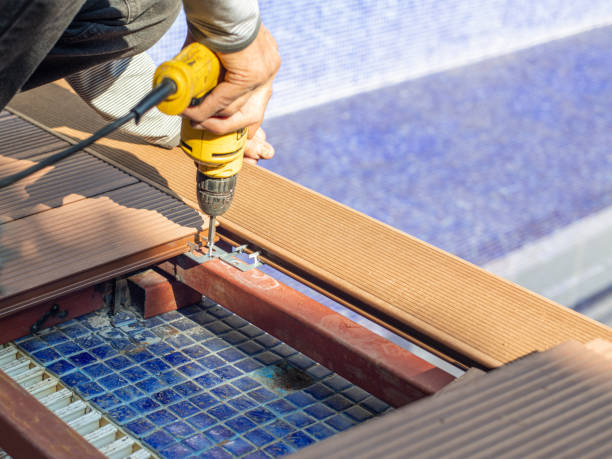So, you’ve noticed that your pool has been infested with algae. Don’t worry, you’re not alone. Algae can be quite a nuisance, turning your once pristine pool into a murky green mess. But fear not because we will uncover the best way to tackle this issue head-on in this discussion.
Following a few simple steps, you can reclaim your pool and ensure crystal-clear waters for your enjoyment. So, grab your sun hat and pool skimmer because we’re about to dive into the ultimate guide for algae removal.
Identify the Type of Algae in Your Pool
To properly address the algae issue in your pool, you must first identify the specific type of algae present. This is crucial because different types of algae require different treatment methods.
Start by closely examining the colour and appearance of the algae. Is it green, yellow, black, or even pink?
Green algae is the most common and can be easily treated with a shock treatment or algaecide.
Yellow algae, or mustard algae, is more stubborn and may require a specialized algaecide and brushing.
Black algae is the most difficult to eliminate and often requires aggressive scrubbing and strong algaecide.
Pink algae, although rare, can be treated with chlorine shock and algaecide.
Gather the Necessary Cleaning Supplies
Ensure you have all the cleaning supplies you need to effectively remove algae from your pool. Having the right tools will make the cleaning process easier and more efficient. Here are the essential supplies you should gather before starting:
- Pool brush: Choose a brush with stiff bristles that can scrub away algae from the pool walls and floor.
- Algaecide: Look for an algaecide specifically designed to treat the type of algae in your pool. Follow the instructions carefully to ensure proper application.
- Pool net: A pool net or skimmer is essential for removing larger debris, such as leaves and twigs, before treating the algae.
- Pool vacuum: If your pool has a lot of debris or algae, using a pool vacuum can help remove it effectively.
- Safety equipment: Don’t forget to wear gloves and safety goggles to protect yourself during the cleaning process.
Brush and Scrub the Affected Areas
Now that you have gathered all the necessary cleaning supplies, it’s time to tackle the next step: brushing and scrubbing the affected areas of your pool.
This step is crucial in removing algae and preventing it from coming back. Start by using a pool brush with stiff bristles to scrub the walls, floor, and other surfaces where algae is present. Apply enough pressure to remove the algae effectively but avoid scratching the pool’s surface.
Focus on areas prone to algae growth, such as corners, steps, and ladders. After brushing, use a pool vacuum or net to remove any loosened debris. Remember to clean the brush thoroughly after each use to prevent the spread of algae.
Shock Your Pool With Chlorine or Algaecide
For a quick and effective solution to rid your pool of algae, consider shocking it with chlorine or algaecide. Shocking your pool involves adding a high concentration of chlorine or algaecide to eliminate and prevent algae growth. This process is crucial when dealing with a severe algae problem or when regular maintenance methods aren’t effective.
First, test the water’s pH and adjust it if necessary to shock your pool. Then, following the manufacturer’s instructions, add the recommended amount of chlorine or algaecide directly into the pool water. Allow the shock treatment to circulate for at least 24 hours before testing the water again and re-balancing the chemicals.
Remember to follow safety precautions and wear protective gear when handling chlorine or algaecide.
Maintain Proper Pool Water Balance and Filtration
To maintain proper pool water balance and filtration, regularly test and adjust the chemical levels and clean or replace the pool filter as needed.
Testing the water regularly is essential to ensure that the pH, alkalinity, and sanitiser levels are within the recommended range. Use a pool water testing kit to measure these levels accurately. If any of the levels are off, add the necessary chemicals accordingly.
Additionally, cleaning or replacing the pool filter is crucial for efficient filtration. Over time, the filter can become clogged with debris and algae, hindering its effectiveness. Clean the filter regularly by backwashing or rinsing it, and replace it if it’s old or damaged.
Maintaining proper water balance and filtration will help prevent algae growth and keep your pool clean and clear.
Frequently Asked Questions
How Do I Prevent Algae From Growing in My Pool in the First Place?
To prevent algae from growing in your pool, there are several steps you can take:
- Regularly test and balance the water chemistry.
- Maintain proper filtration and circulation.
- Brush and vacuum the pool regularly.
- Keep the pool covered when not in use.
Can I Use Household Cleaning Products to Remove Algae From My Pool?
You can use household cleaning products to remove algae from your pool.
However, it’s important to choose products specifically designed for pools, as regular household cleaners may not be effective or could damage your pool.
Is It Safe to Swim in a Pool With Algae?
Yes, it isn’t safe to swim in a pool with algae. Algae can cause health issues and make the water slippery.
It’s important to clean, treat, and shock the pool to ensure a safe swimming environment.
How Often Should I Clean My Pool to Prevent Algae Growth?
To prevent algae growth, clean your pool regularly. The frequency depends on various factors such as weather, usage, and location, but generally, aim to maintain a clean and algae-free pool once a week.
Can I Use Natural Remedies to Get Rid of Algae in My Pool?
You can try using natural remedies, but they may not be as effective as chemical treatments.
It’s best to consult with a pool professional to ensure you’re using the most efficient method.
Conclusion
So there you have it, the best way to clean algae from your pool.
You can effectively remove algae from your pool by identifying the type of algae, gathering the necessary supplies, and thoroughly brushing and scrubbing the affected areas.
Additionally, shocking your pool with chlorine or algaecide and maintaining proper water balance and filtration will help prevent future algae growth.
With these steps, you can enjoy a clean and algae-free pool all season.








